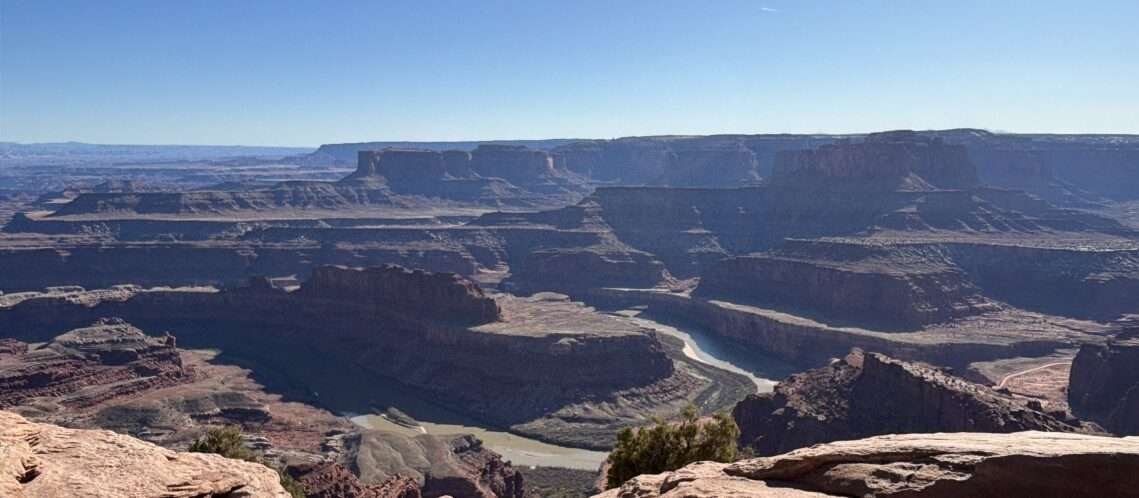My initial plan for the drive between Park City and Moab was a stop at Goblin Valley State Park and Little Wild Horse Canyon, mostly because they fulfilled two of my Utah bucket list items – hoodoos and slot canyons. But as our transfer day approached and I really got into the details of planning the stop, I realized that it was too aggressive for our timeframe. Although it was roughly along the way, it would have added an extra 100 miles and an hour and 45 minutes of driving to the trip. Since I knew we wanted to get to our rental in Moab before dark and that the kids wouldn’t be up for a super early start after two days of skiing, I begrudgingly gave up on the idea. I held onto hope that we would make the stop on our way back to Salt Lake City when we had no time constraints (spoiler alert – we did not) and went about figuring a plan B.
And with so much to see in Utah, it was not difficult at all to figure out a plan B. Dead Horse Point State Park quickly jumped to the top of the list, as I saw it appear again and again in articles as a “don’t miss” spot if you are in Moab. When I checked it out on the map, it was only 30 miles Moab, which gave us the advantage of getting the bulk of the trip behind us before we stopped.
Claiming to be one of the most photographed spots in the world, the main viewpoint stands 2000 feet above a u-turn of the Colorado River. The park gets its name from a late 1800s legend of cowboys corralling wild mustangs on the rocky peninsula above the river to choose the horses they wanted to tame. One year the unselected animals were left to die on the point, giving the state park its name.
We arrived at the Visitor Center just before 4 pm and were immediately awed by the views. Desert landscape led to a red rock canyon framed by snow capped mountains in the distance. It was stunning.
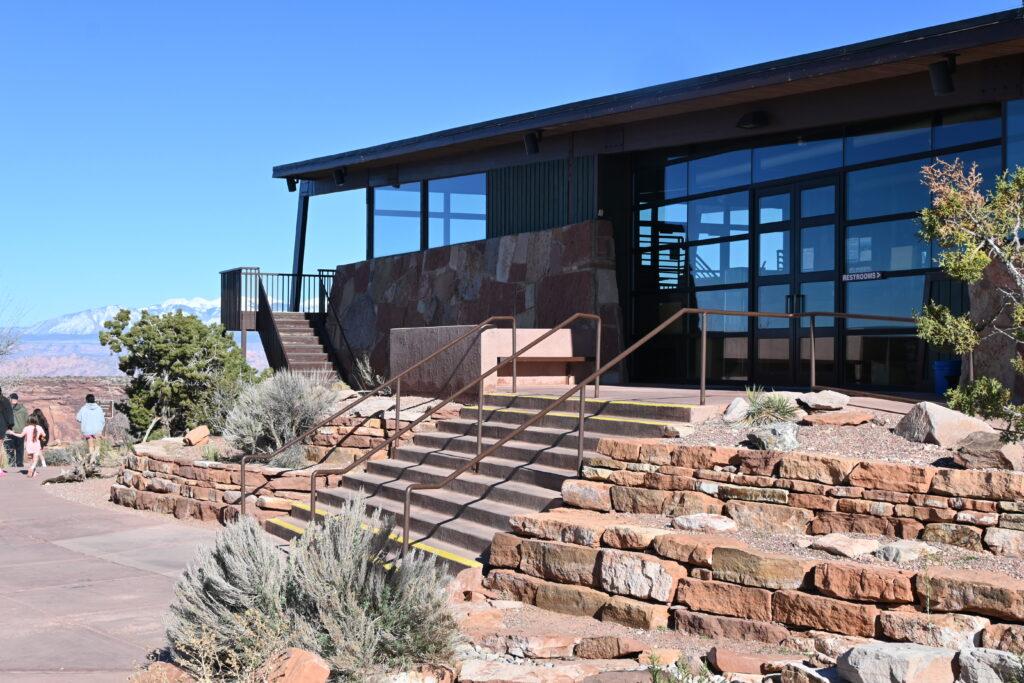
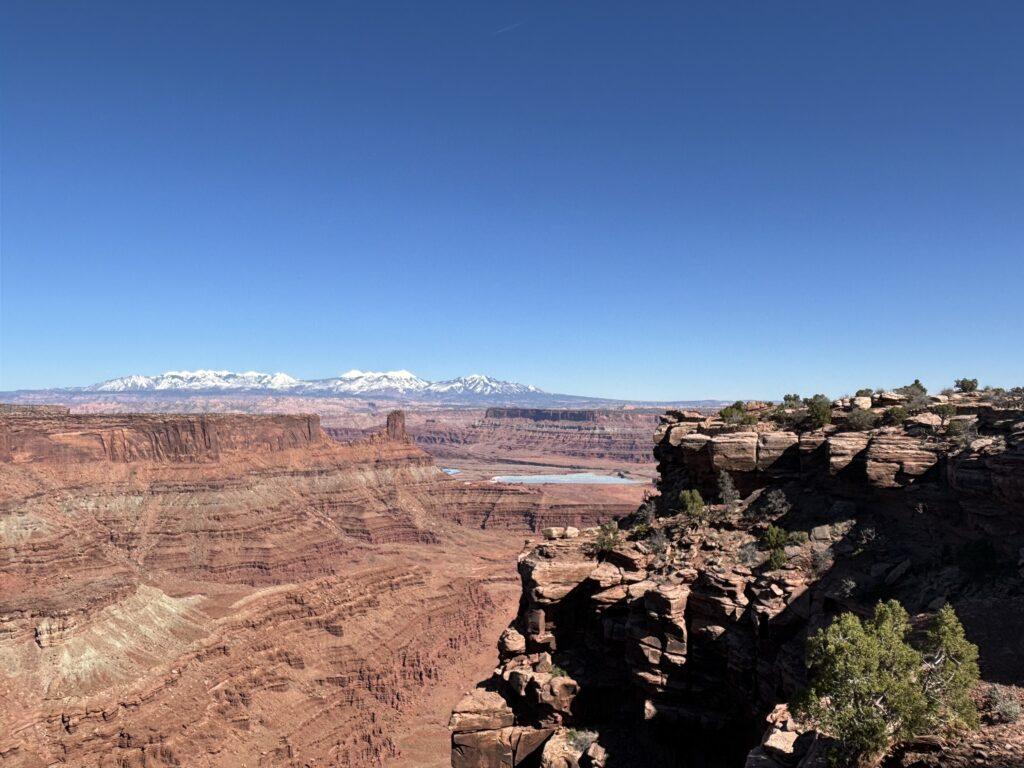
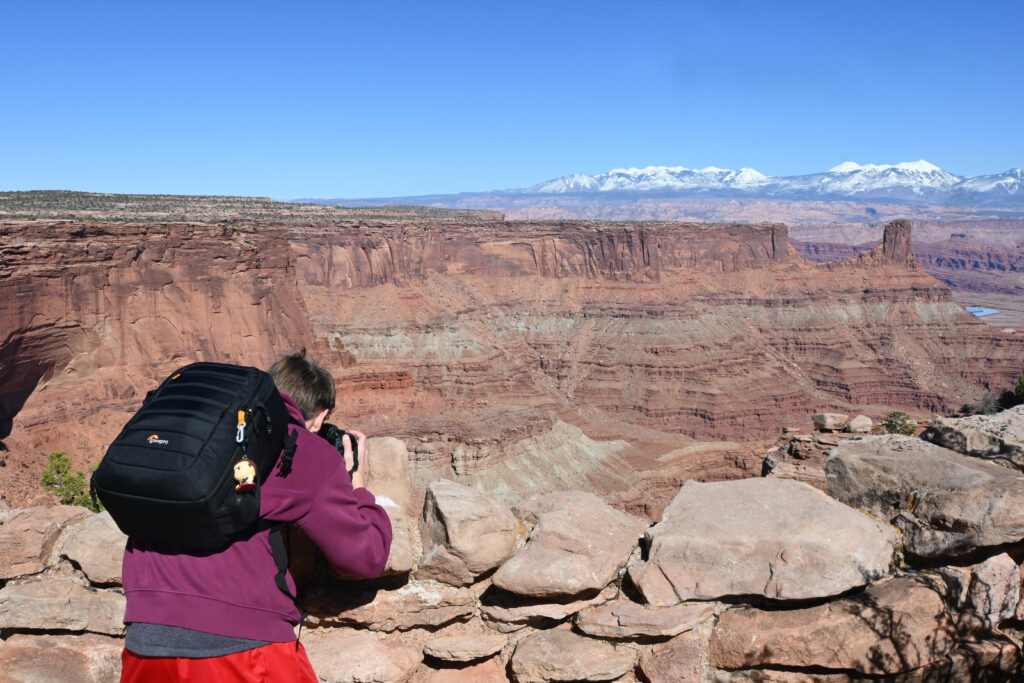
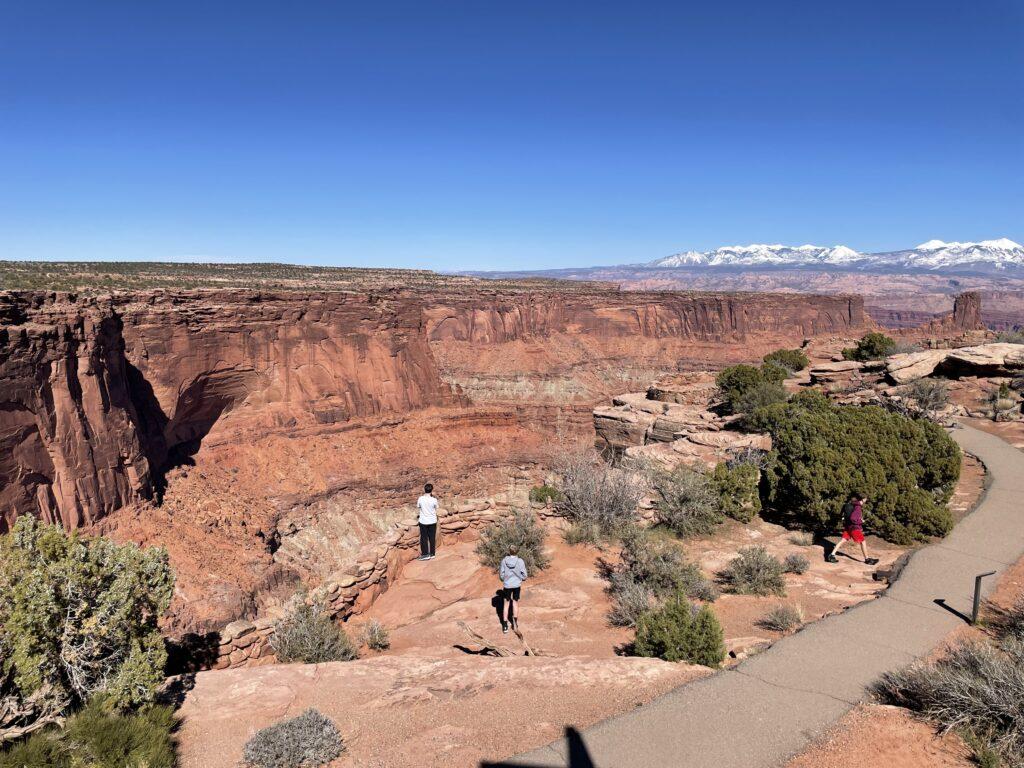
Before heading out, we went inside the Visitor Center to get a map. I had planned for us to start at the Colorado River Overlook trail that left from the Visitor Center but had trouble finding signs for it. I asked the ranger and she said that it had been renamed to the Desert Overlook Trail and pointed me in the right direction. The two names seem to indicate very different types of overlooks to me. After completing the trail, the Desert Overlook seemed to be a more accurate description so I can see why they changed it. (Note that most information on the internet still references the old Colorado River trail name.)
Before heading out on the Desert Overlook Trail, we took a quick loop around the Nature Trail. We hadn’t necessarily planned to do the trail but my youngest took off after some animals scurrying down the trail and we all followed. We later learned that they were Hopi chipmunks, a smaller chipmunk species that features a red and orange stripe down its back as opposed to the typical white and black.
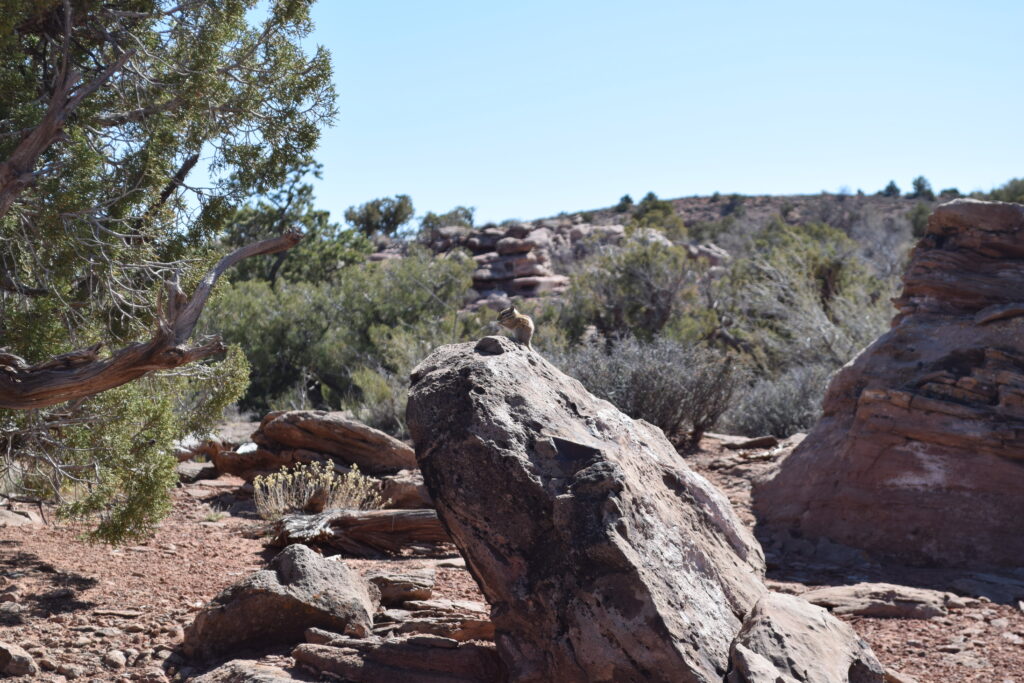
The Nature Trail was quick but informative. In addition to signs identifying and explaining the many plant species along the trail, there was a really informative explanation of the bright blue bodies of water found at the bottom of the canyon. These Solar Evaporation Ponds are used to harvest salt from a mine below the desert floor. They appear especially blue because a dye is added to them to speed up evaporation.
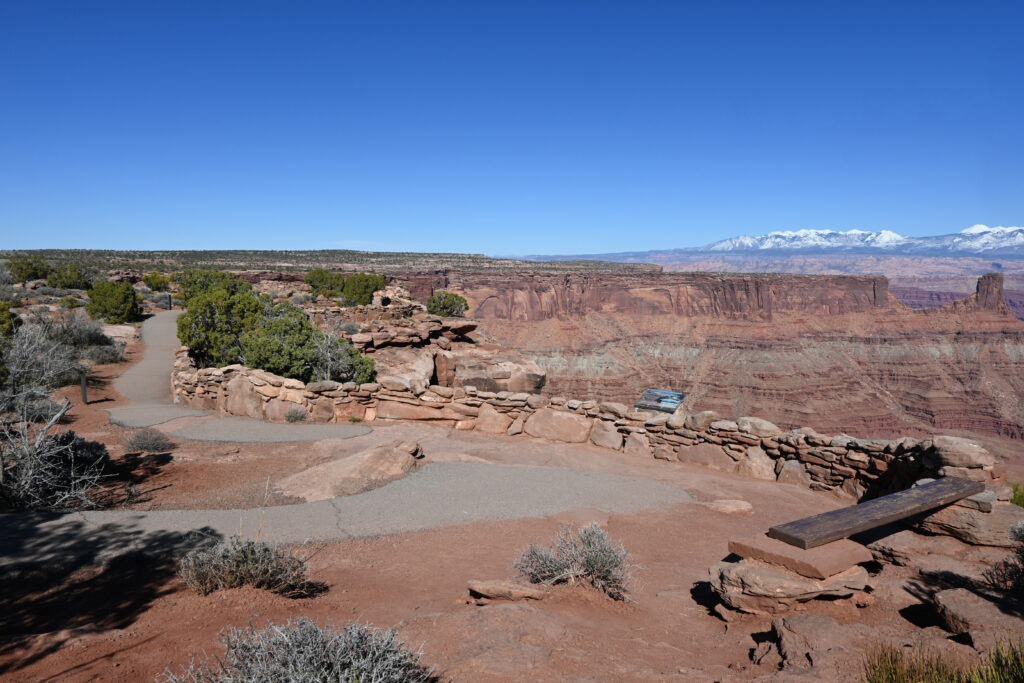
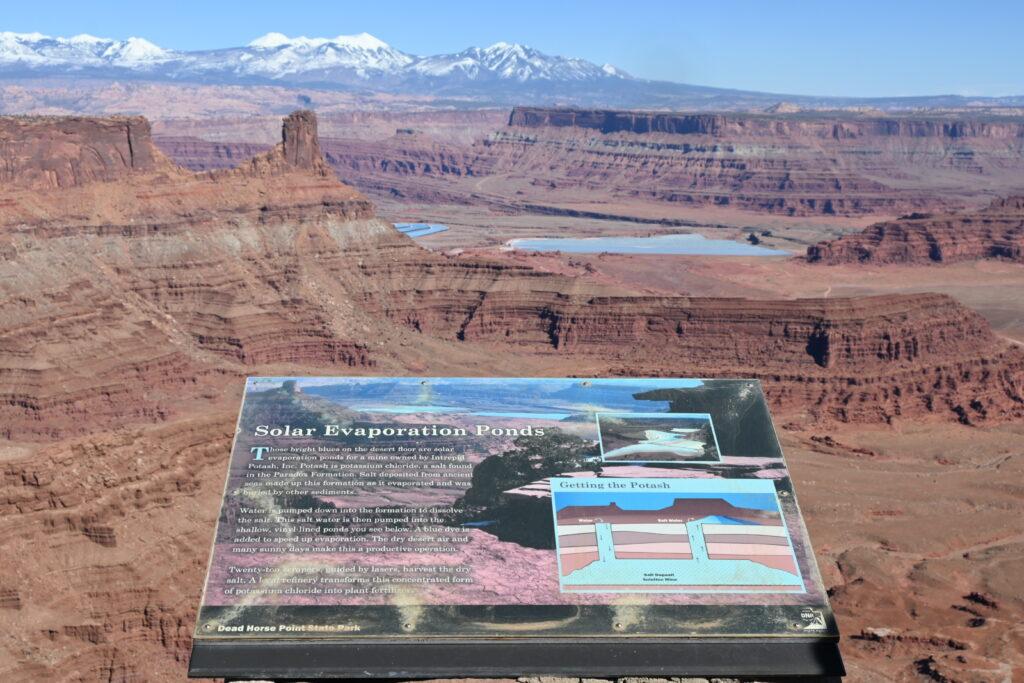
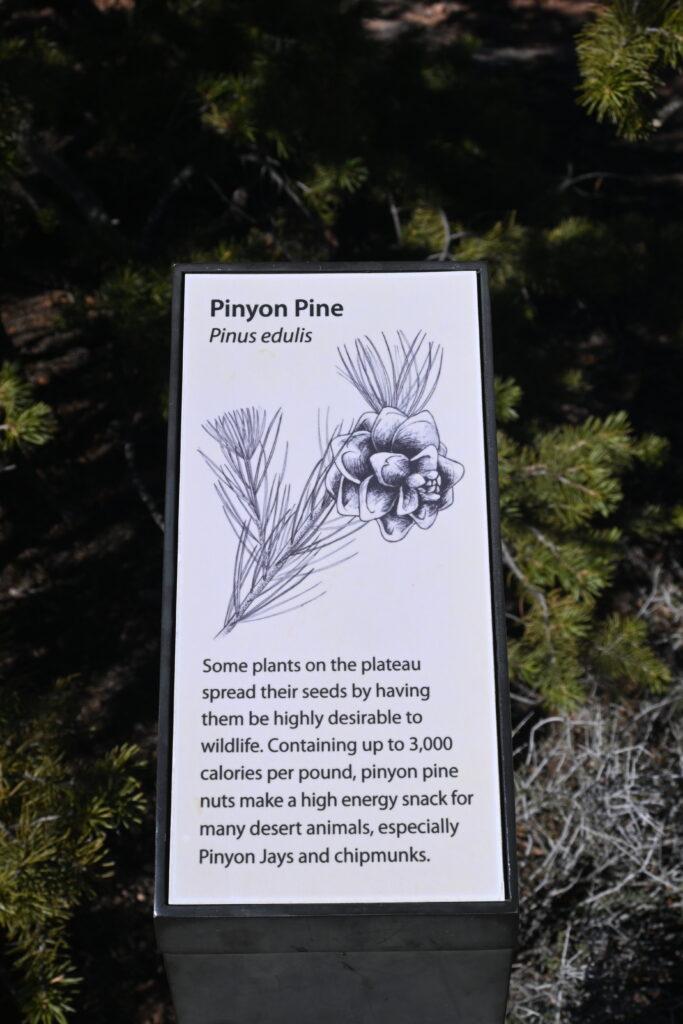
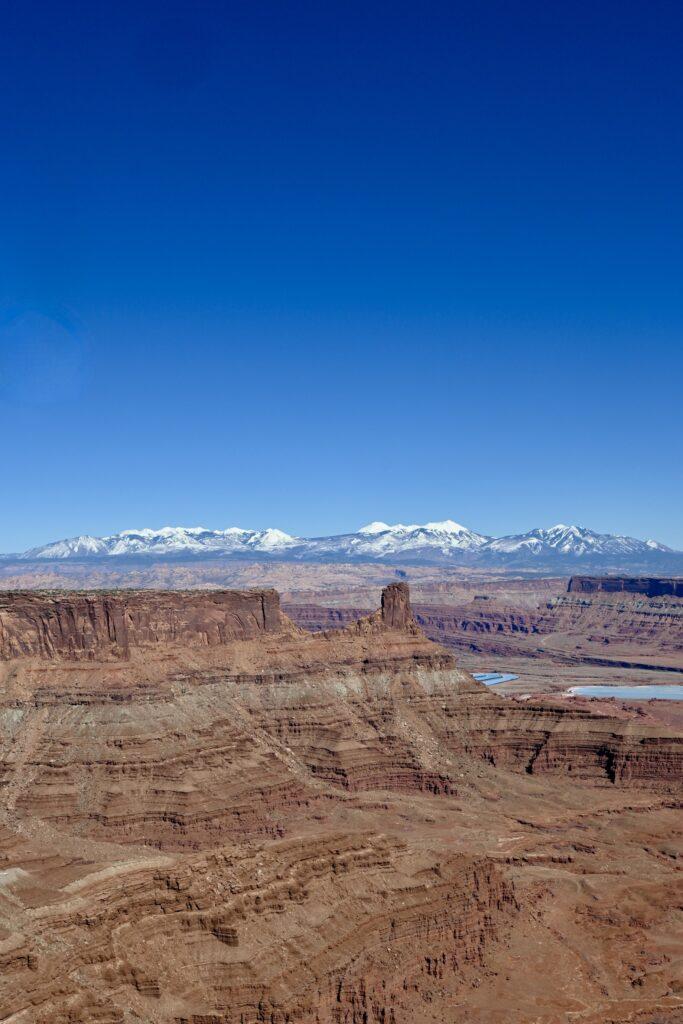
After the quick loop around the Nature Trail, we followed signs for the Desert Overlook Trail. The trail is a 1.2 mile roundtrip, with the turnaround point at the overlook. It is more well-marked in some parts than others but basically you keep going forward keeping the canyon to your right.
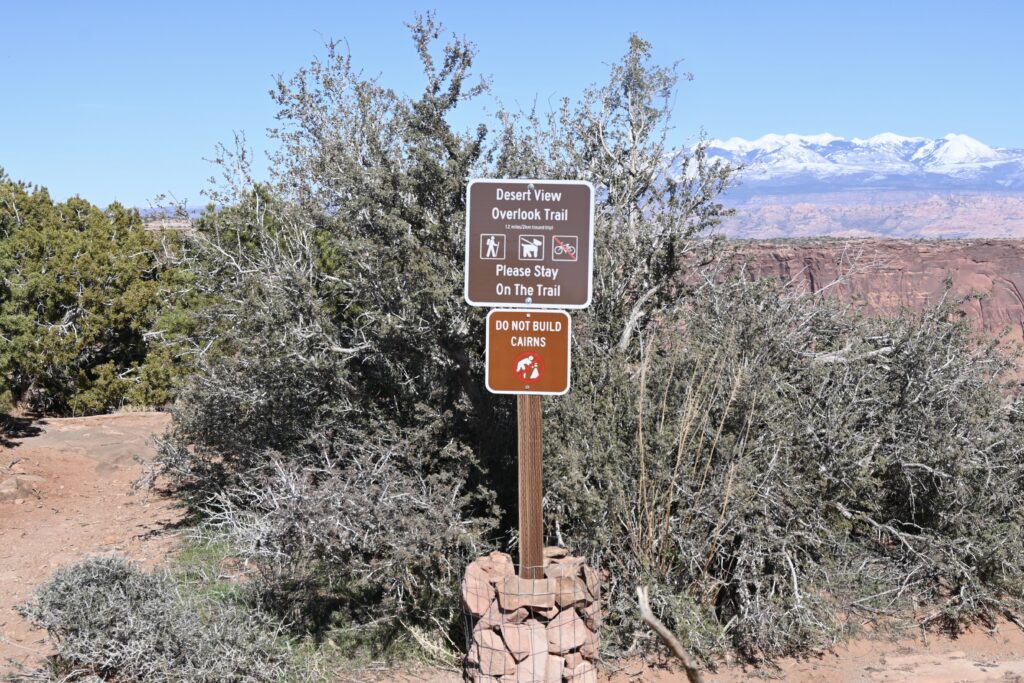
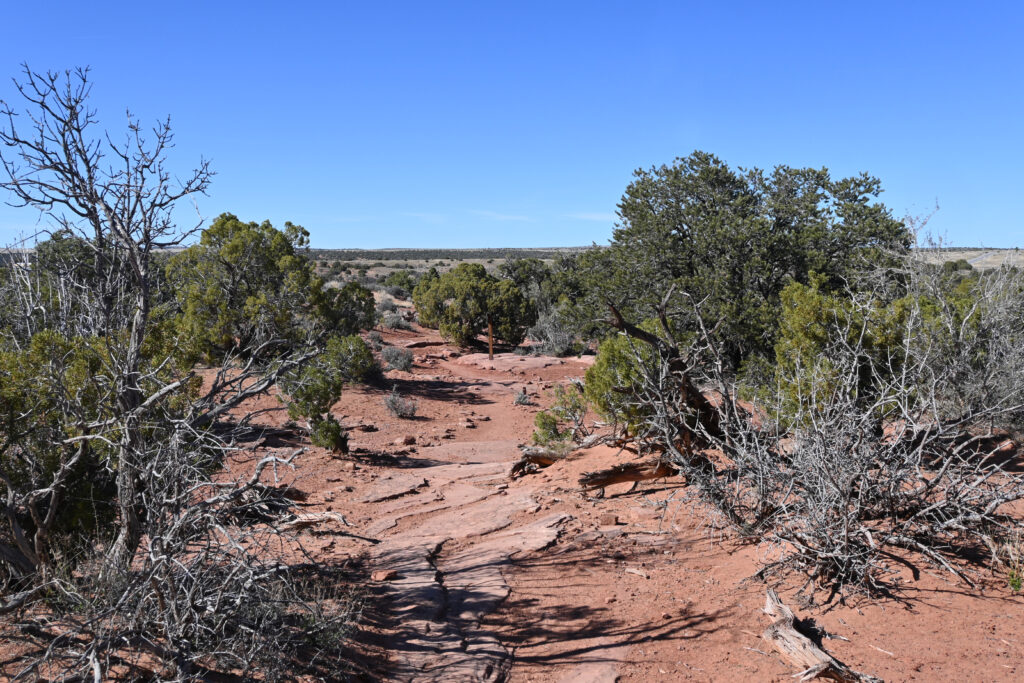

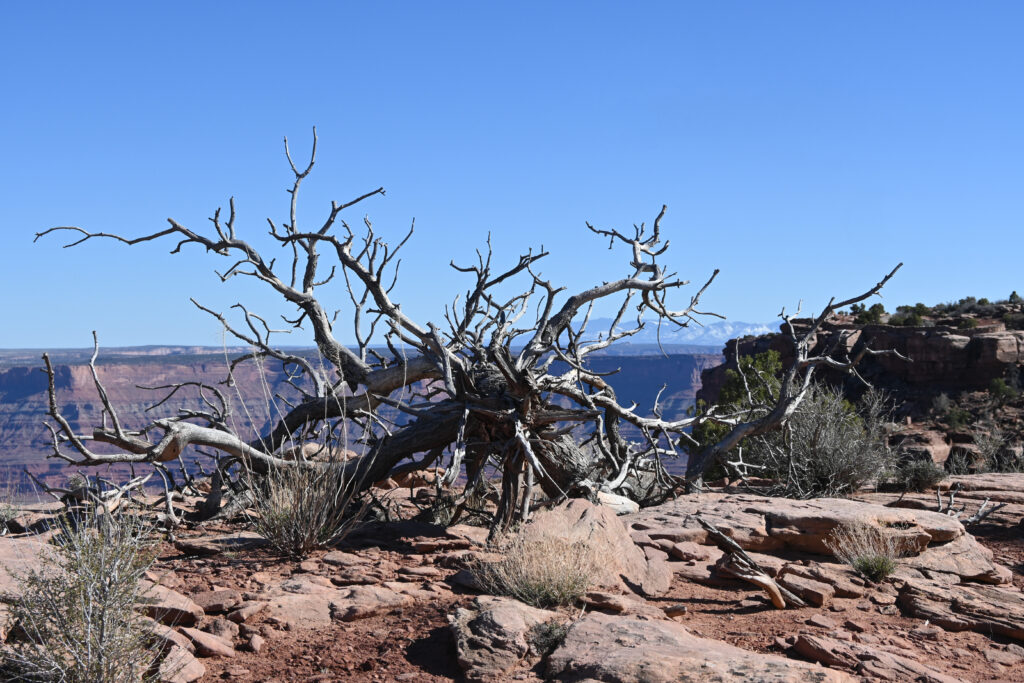
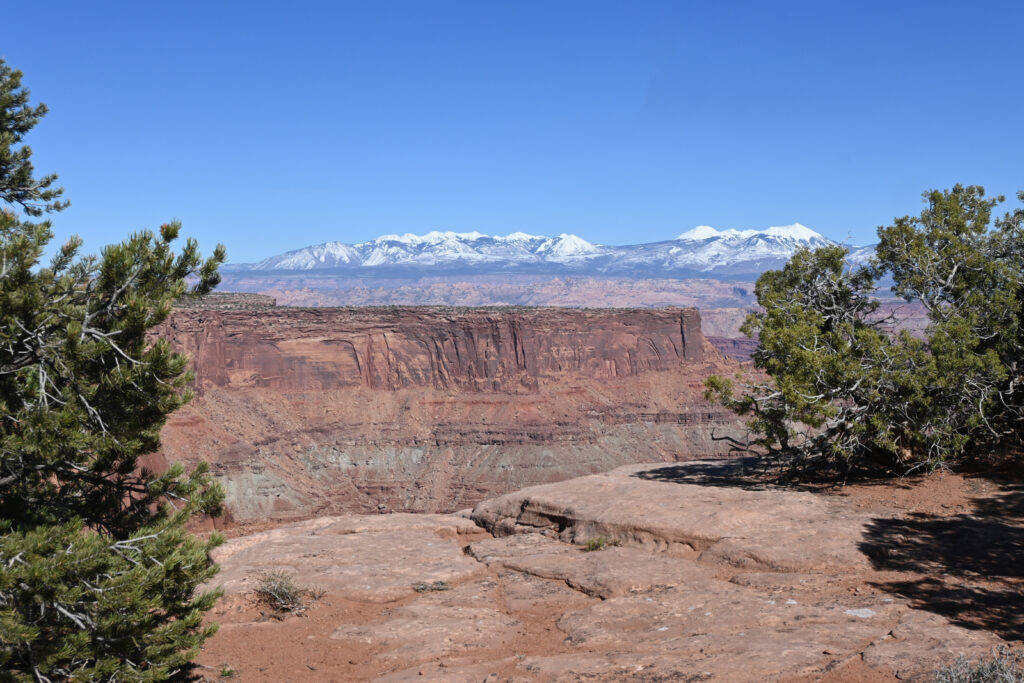
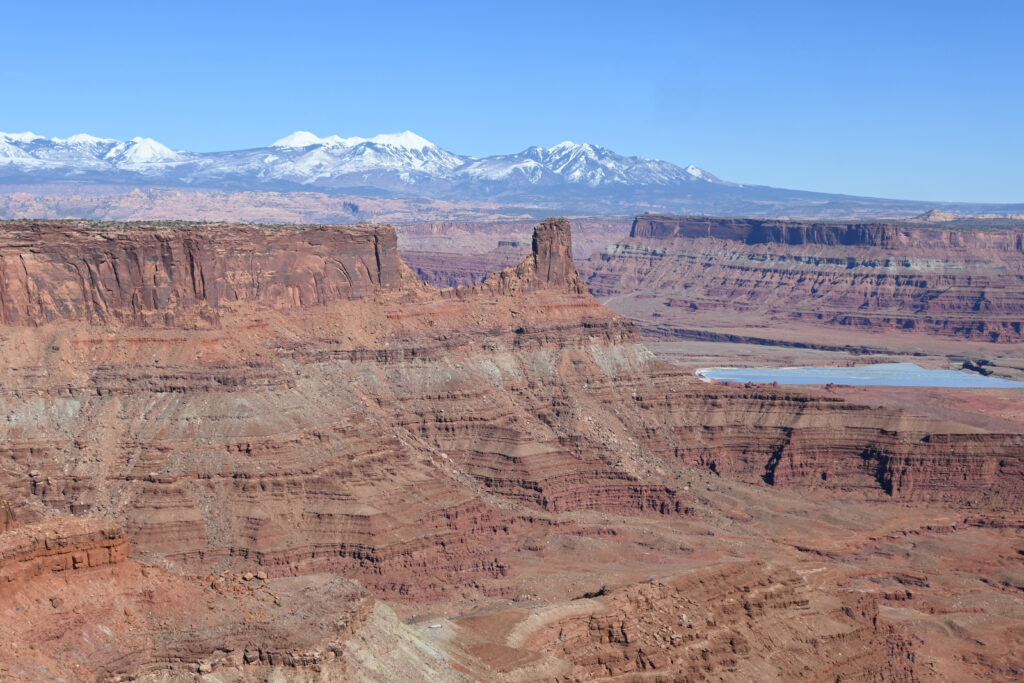
With stunning views on our right and fascinating desert landscape all around us, we really enjoyed this hike. The boys found it especially adventurous, jumping over the rocks, avoiding the cacti, and spotting lizards and chipmunks scurrying about.
About a quarter mile before the lookout, we came upon the Ephemeral Pools. Also known as water potholes, these natural sandstone basins temporarily collect water after rains. Some of the potholes were dry but many held varying degrees of water. Given how hot it was, we were surprised to see how many of them had water… and organisms! From mites to crustaceans (fairy shrimp, tadpole shrimp and clam shrimp), there were a surprising number of little critters swimming around in the pools.
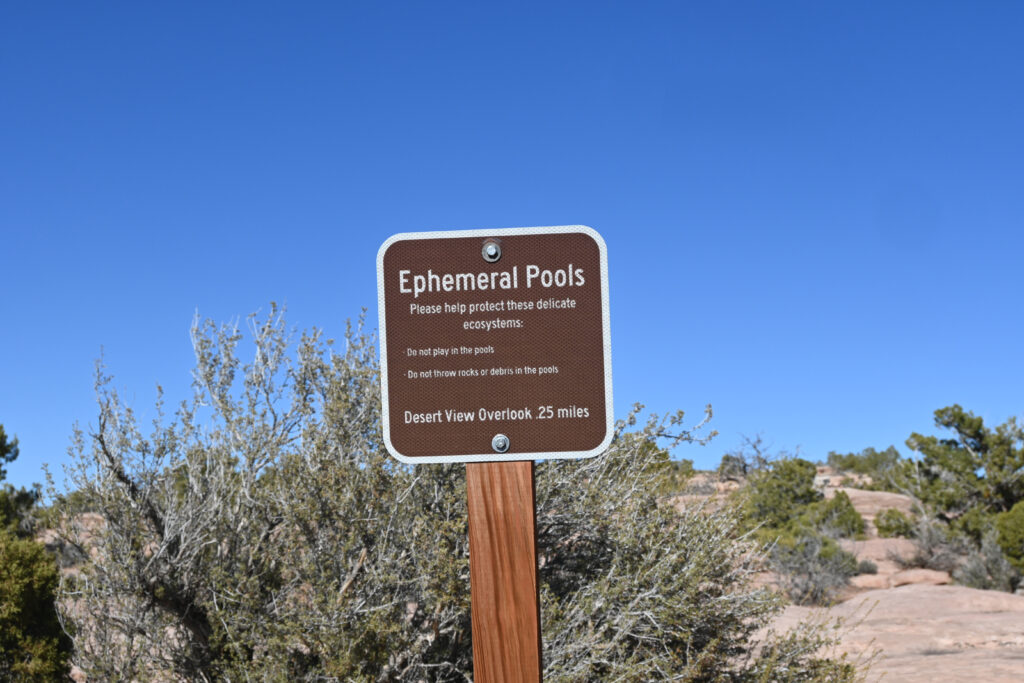
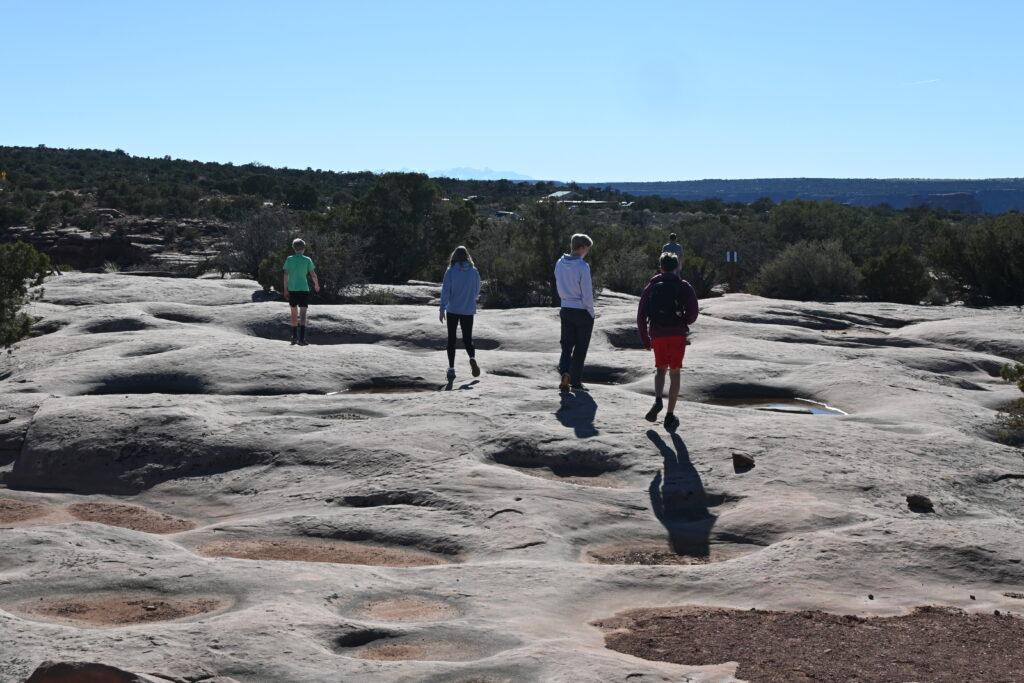
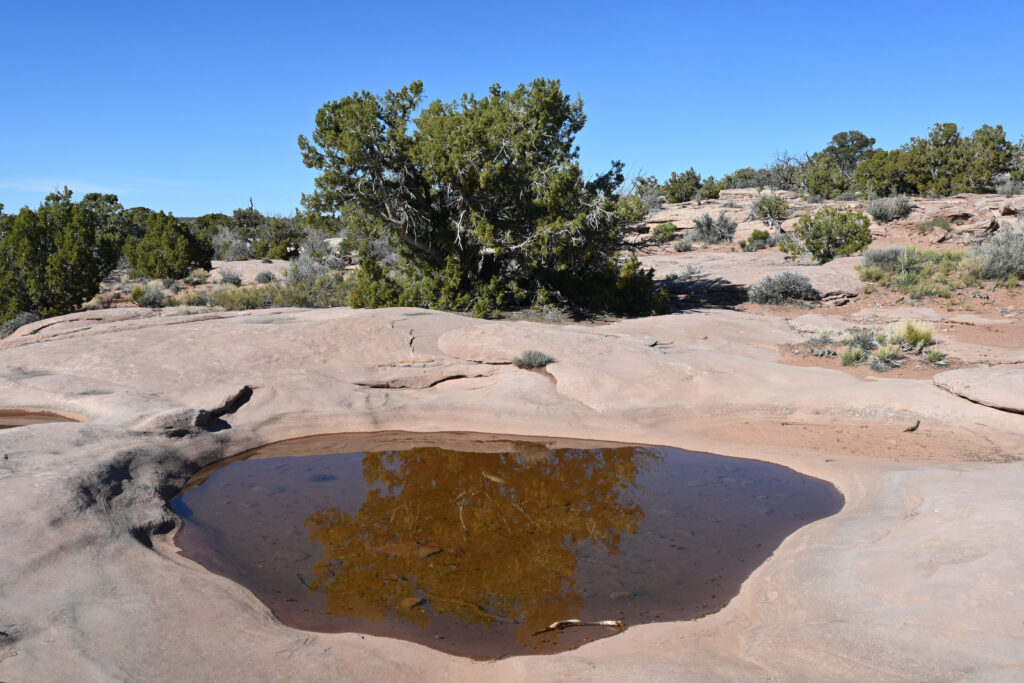
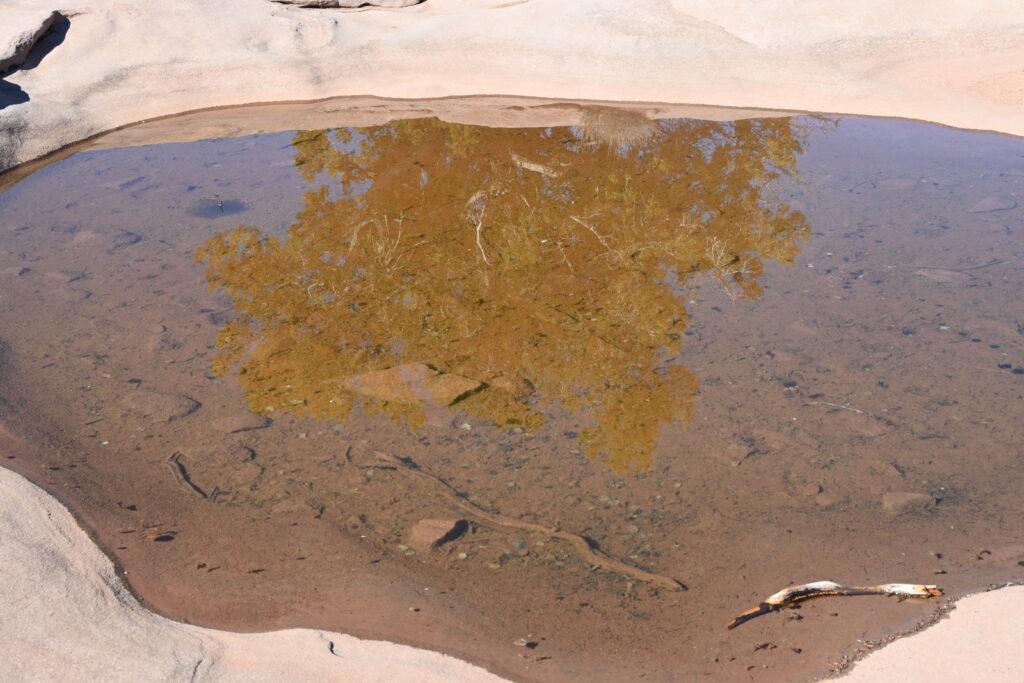
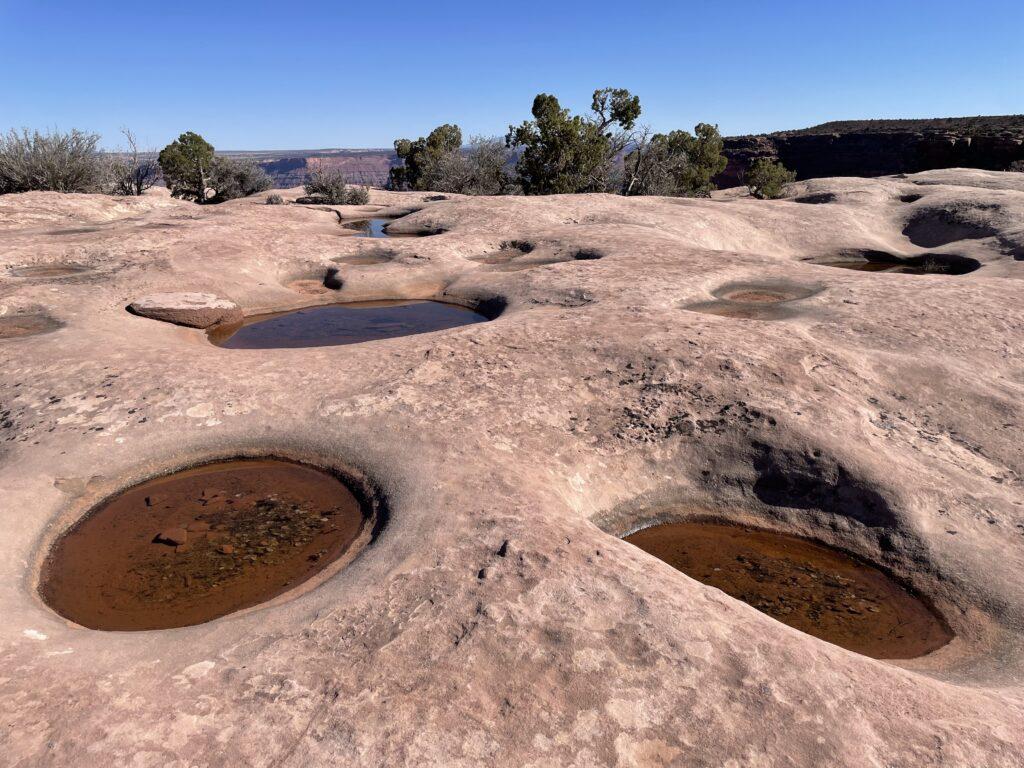
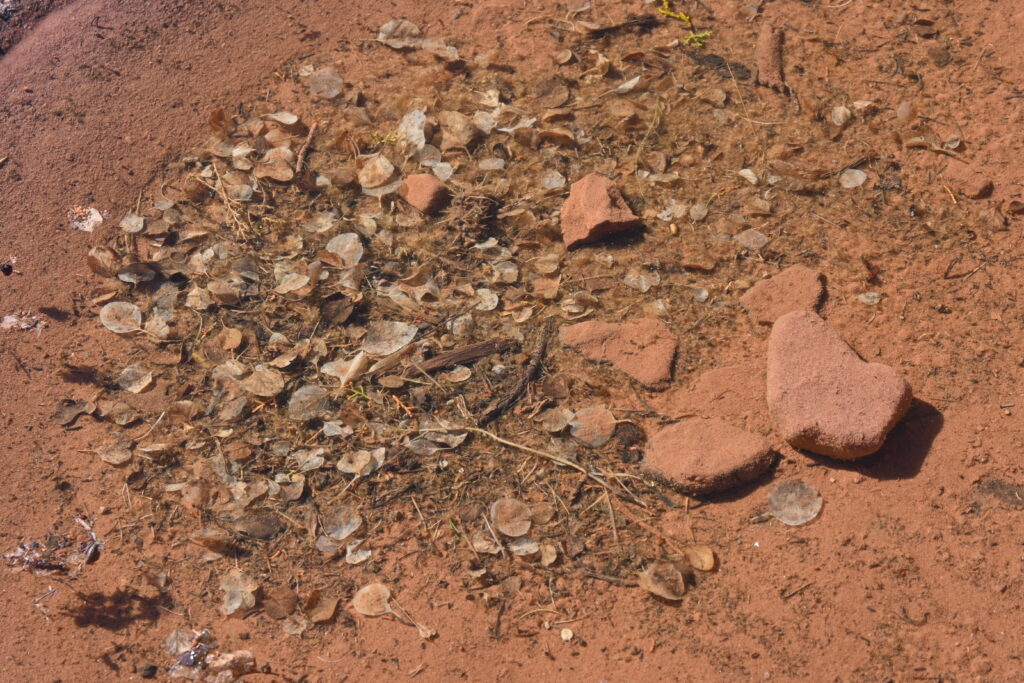
From there we continued on to the overlook. Or did we? I’m not actually sure if we made it there. The trail became a little nebulous after this point and we continued along, enjoying the views but maybe not getting to the official overlook. Regardless, we found all of the views stunning and really enjoyed this trail.
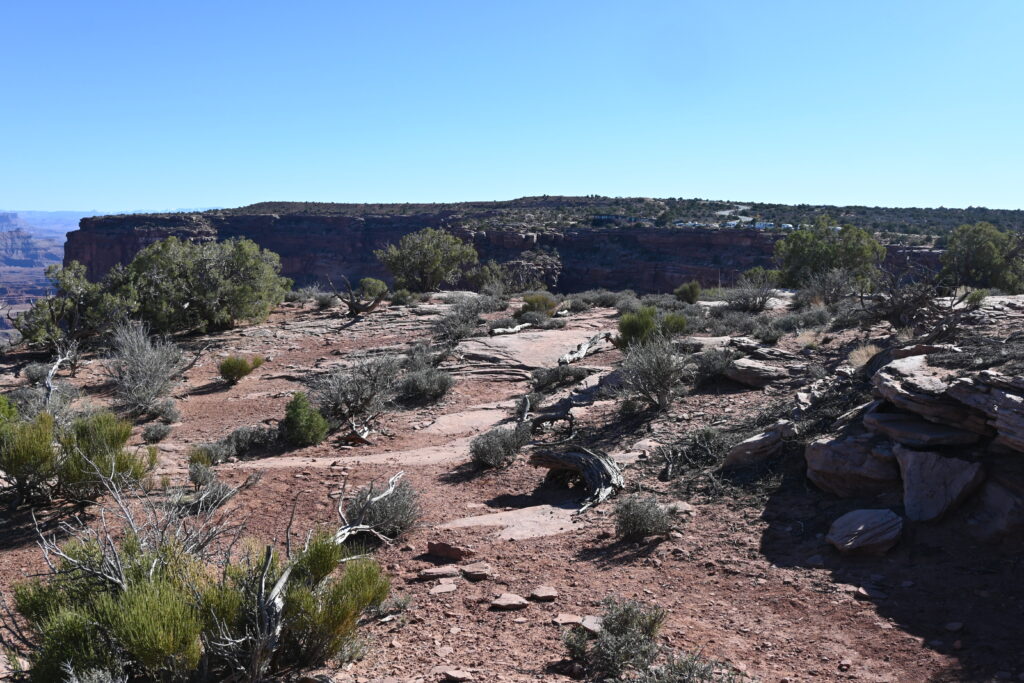
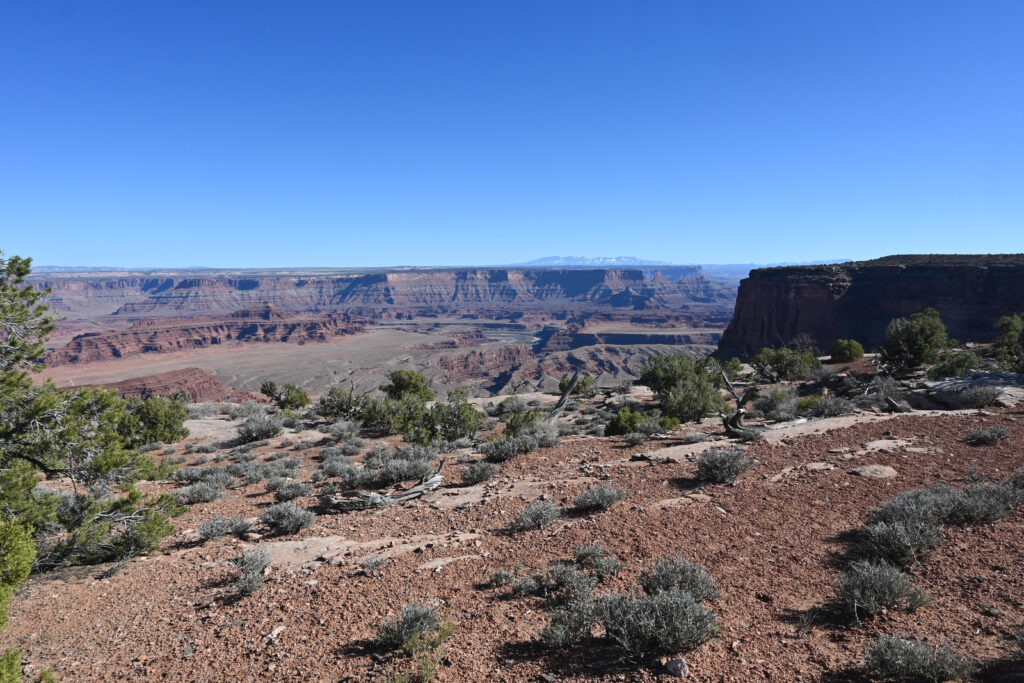
The trail was an out and back so when we reached the overlook (or what we assumed to be the overlook), we turned around and headed back to the parking lot. From there we drove to the Dead Horse Point Overlook Trail. The viewpoints at this overlook are easily accessible from the parking lot. From the parking lot you can choose to head out on either the East or West Rim Trails or to simply enjoy the stunning views from the overlook.
It was getting late in the day and we had spent more time exploring the trails around the Visitor Center than we had anticipated, so we chose to simply enjoy the breathtaking views. On the eastern side of the parking lot, there were views of the canyons, looking back towards the Solar Evaporation Ponds we saw from the Desert Overlook trail. It was amazing to see the many layers of the canyon that had formed over hundreds of millions of years.
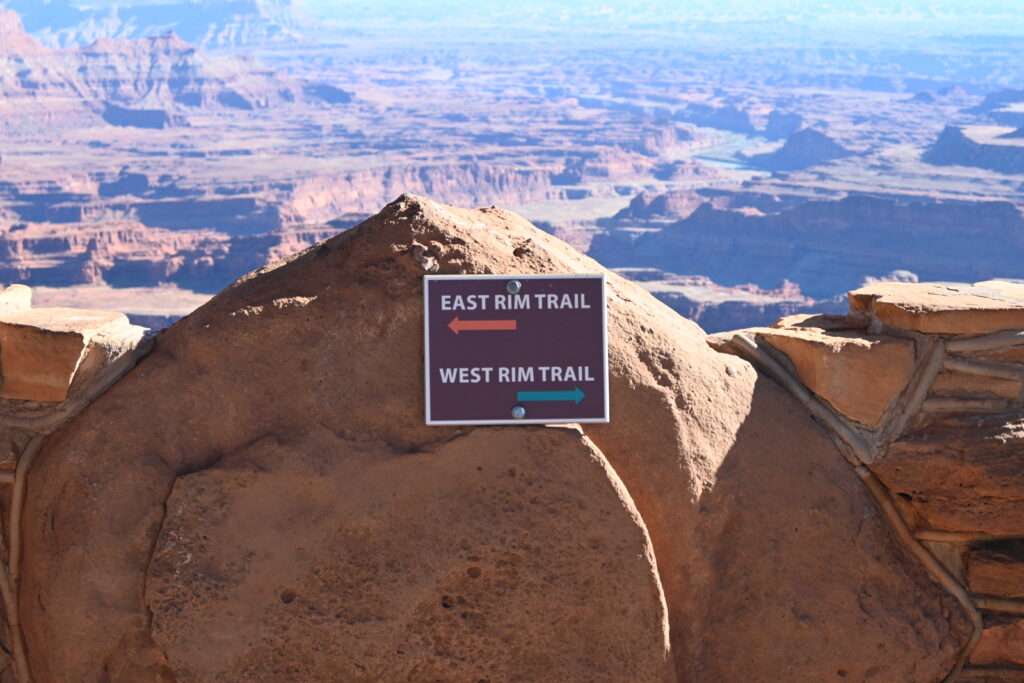
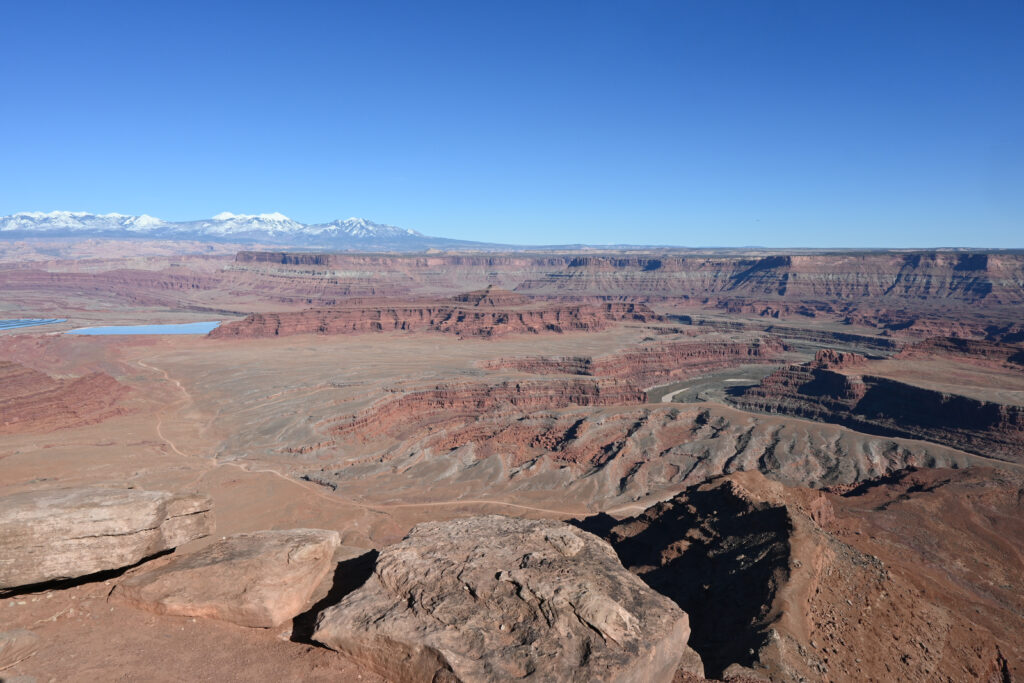
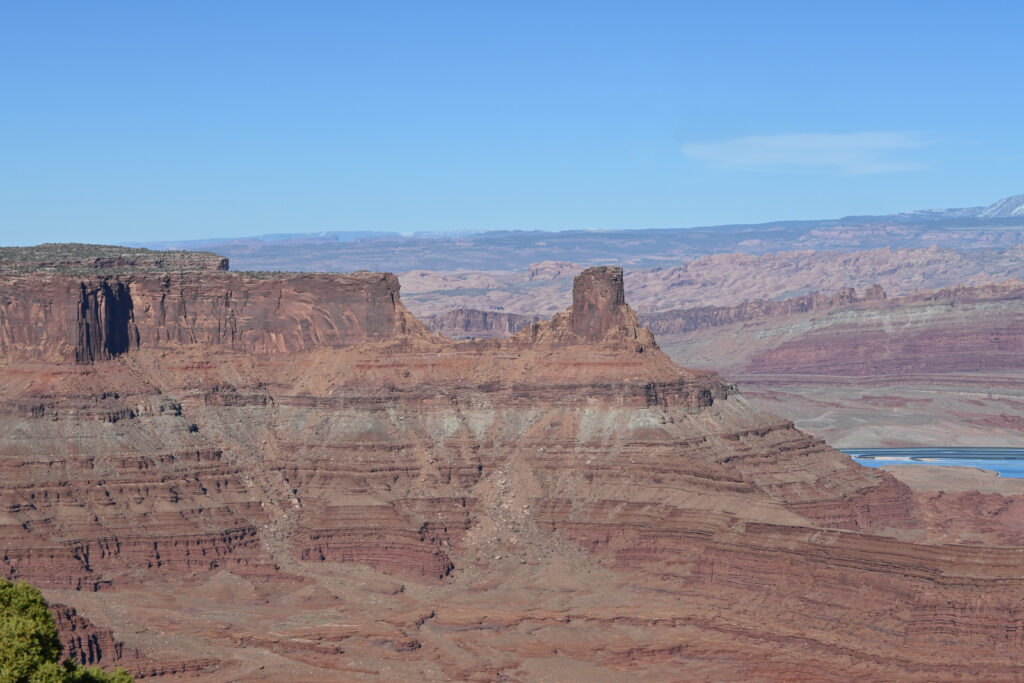
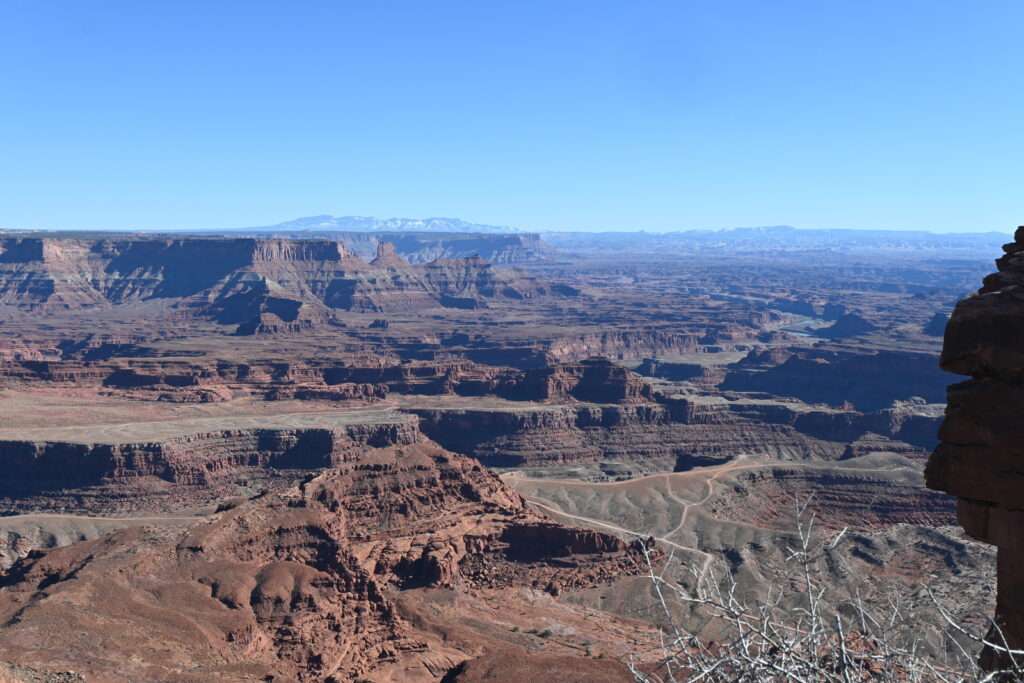
On the western side of the parking, you can easily reach the iconic view of Dead Horse Point. Standing 2000 feet above the Colorado River, the view of the horsehoe bend of the river and Canyonlands National Park is one of the most photographed vistas in the world. And I was surprised to learn that this (not the Grand Canyon) is where the final scene of Thelma & Louise was filmed!
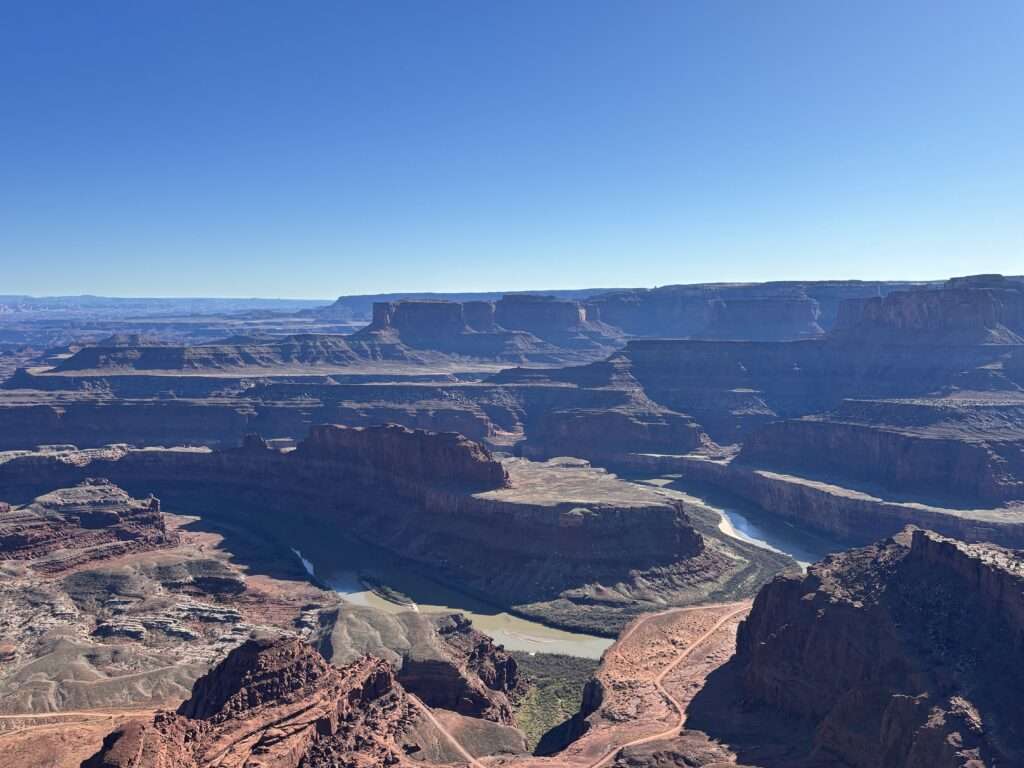
Although we chose not to hike along either of the rim trails, we were in no rush to leave this amazing scene. There were some great places to climb down for a different vantage point or to just sit and reflect and take in the majestic beauty of this area.
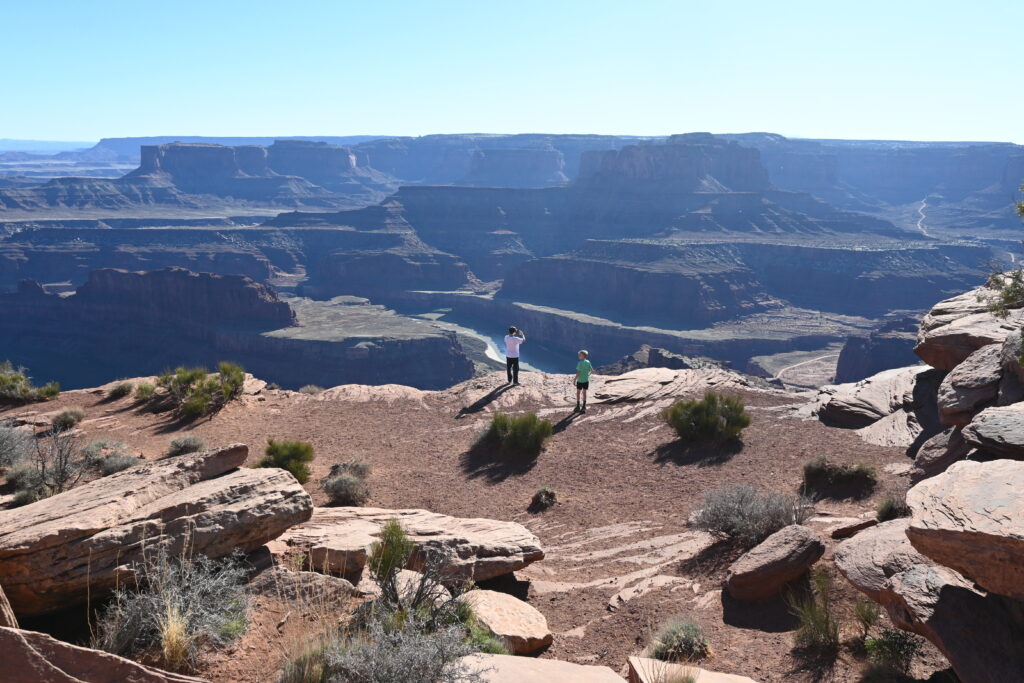
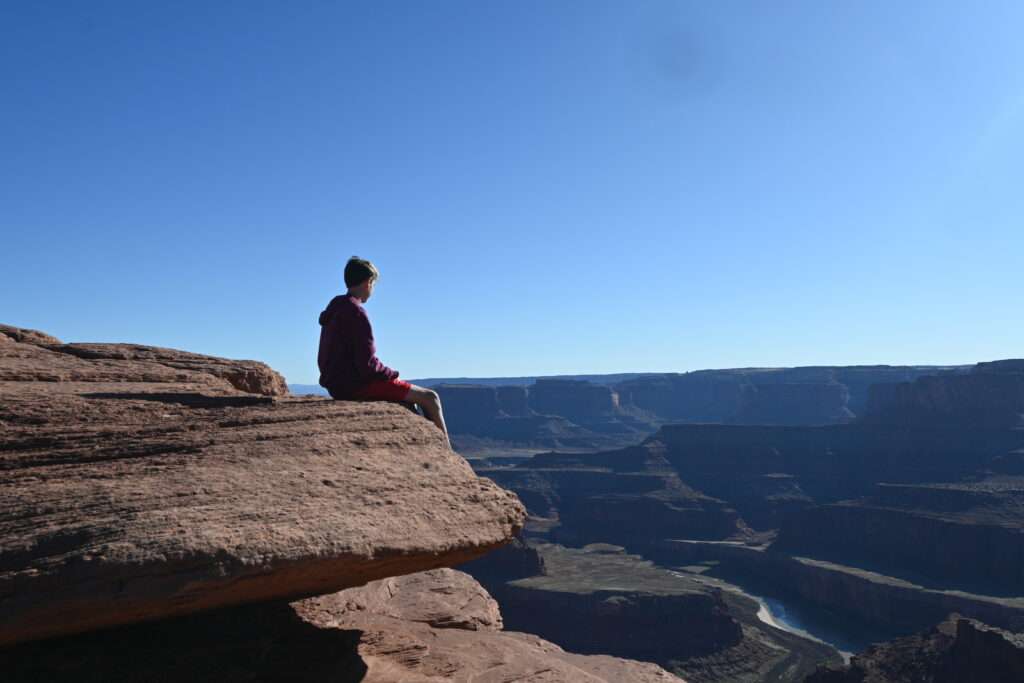
Dead Horse Point State Park was an amazing introduction to the Moab area. We left the snowy mountains and 26 degree weather of Park City in the morning and less than 5 hours later we were in the red rock canyons and 66 degree weather. The snow capped La Sal Mountains in the distance were the only hint that we were still in the same state. The drastic change in landscape and the dramatic scenery were simply incredible.
